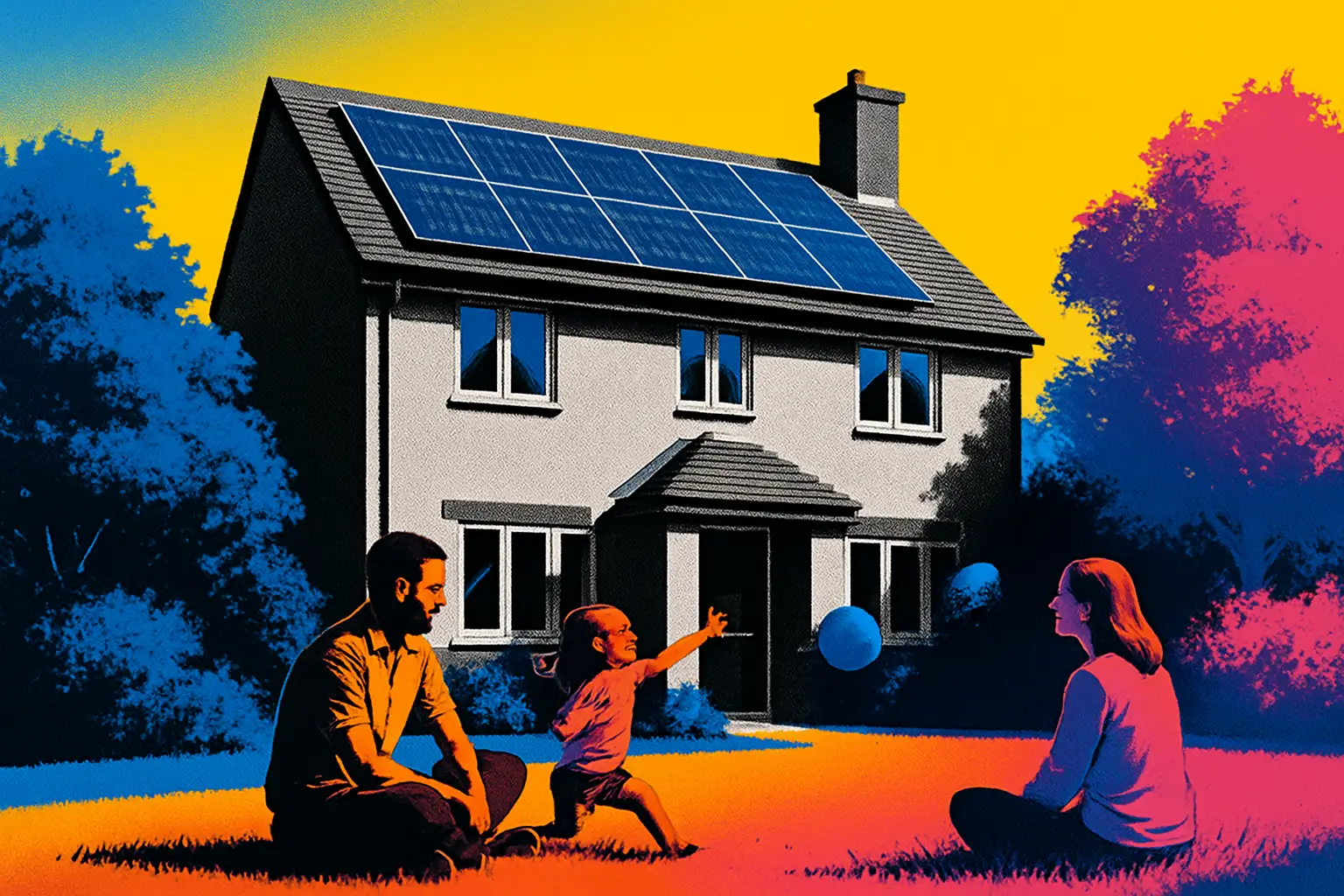Solar panels Home services eligibility & requirements (UK)
Who qualifies, how to apply, and how to earn from SEG - explained clearly for UK households.
Solar panels Home services eligibility & requirements (UK)
Why solar is closer than you think
Solar uptake is accelerating across Great Britain for one simple reason - the numbers add up. With targeted grants for lower incomes and energy-inefficient homes, plus the Smart Export Guarantee paying for surplus electricity, many households can cut bills and shorten payback times. Here is a clear guide to funding, rules and the practical steps.
Is this guide for you?
If you live in England, Scotland or Wales and want lower energy bills, you are in the right place. Homeowners, tenants with landlord consent, and many social housing residents can access support. Even if you do not qualify for grants, group buying or installer finance can improve affordability and unlock SEG income.
Key terms made simple
- ECO4 - A GB scheme aimed at improving the least efficient homes, prioritising households on qualifying benefits or incomes typically below £31,000. Measures can include solar PV where suitable.
- LA Flex - Local Authority flexible eligibility that extends ECO4 support to modest-income households and residents with health conditions affected by cold.
- MCS - The Microgeneration Certification Scheme. Your installer and system must be MCS certified to access grants and SEG payments.
- SEG - The Smart Export Guarantee. Energy suppliers pay you for each kWh of solar electricity exported to the grid. Tariffs vary by supplier.
- Export meter or smart meter - Required for SEG to measure export accurately. Most smart meters are compatible.
- Permitted development - Most domestic solar installations do not need planning permission, with exceptions for listed buildings or conservation areas. Always check locally.
- DNO registration - Installers notify your Distribution Network Operator after installation to connect safely.
A certified system with the right meter is your ticket to ongoing export income.
Your main routes to getting solar
Here are the common paths UK households use to install solar, from funded to fully private.
| Option | Who it suits | Upfront cost | Typical support | Timeline |
|---|---|---|---|---|
| ECO4 or LA Flex funding | Low-income or energy-inefficient homes | Low to none | Grant-funded measures including solar where suitable | 2-4 months |
| Social housing programme | Social tenants via housing providers | None to low | Provider-funded renewables rollout | 2-6 months |
| Solar Together (group buying) | Owner-occupiers and tenants with consent in participating councils | Reduced | Pre-vetted installers, bulk pricing | 1-3 months |
| Private install + SEG | Most homeowners | Medium | SEG export payments, potential finance | 2-8 weeks |
| Regional schemes (Scotland, Wales) | Residents in devolved nations | Low to medium | Loans and grants via national programmes | 1-3 months |
- ECO4 and LA Flex focus on the least efficient homes and lower incomes, widening to health-related cases through councils.
- Group buying like Solar Together aggregates demand and negotiates lower prices - popular with cost-conscious buyers.
- Private installs remain common. Choose MCS installers, add a smart meter, and register for SEG to monetise excess power.
- Scotland and Wales offer additional loans or grants alongside UK-wide support.
Costs, savings, returns and risks in context
Upfront costs vary by system size, roof complexity and installer. Group buying may reduce costs, and grant-funded routes can remove them for eligible homes. The SEG improves returns by paying you for exports.
| System size | Typical home | Example annual bill saving with SEG | Notes |
|---|---|---|---|
| 3 kW | 1-2 bedroom | £550-£650 | Savings vary with usage and tariff |
| 4 kW | 2-3 bedroom | £640-£800+ | Popular size for suburban roofs |
| 5-6 kW | 3-5 bedroom | £800-£1,100+ | Higher usage homes benefit most |
Risks and considerations:
- SEG tariffs vary by supplier and can change. Shop around and review terms.
- Roof shading and orientation reduce output. A survey will quantify the impact.
- Batteries add flexibility but increase upfront cost. Check payback carefully.
- Always use MCS installers and confirm warranties for panels, inverters and workmanship.
Aim for a system sized to your consumption - not just your roof.
Who qualifies for support
- Income and benefits - ECO4 prioritises households on certain benefits or with incomes typically below £31,000. LA Flex can include modest incomes or health-related cases.
- Energy inefficiency - Lower EPC bands or hard-to-heat homes are favoured, often alongside insulation upgrades.
- Tenure - Homeowners, private tenants with landlord permission, and social housing tenants can all be eligible under different routes.
- Regional support - Scotland offers grants and loans via Home Energy Scotland. Wales provides interest-free loans and grants through national programmes. Northern Ireland has insulation-focused assistance and advice.
- Documentation - Expect to provide ID, proof of income or benefits, recent energy bills, and proof of ownership or tenancy. An energy assessment may be required.
If you do not meet grant criteria, consider group buying or a private install with SEG to capture long-term savings.
From first check to switch-on - the steps
- Confirm roof suitability and shading with an initial assessment.
- Check grant eligibility via ECO4 or LA Flex with your council.
- Compare quotes from MCS-certified installers or group buying.
- Select system size aligned to your household consumption.
- Ensure DNO notification is handled by your installer.
- Install or upgrade to a compatible smart or export meter.
- Complete installation, commissioning and receive your MCS certificate.
- Register for SEG with your chosen energy supplier.
Advantages and trade-offs
Pros
- Lower energy bills and SEG income from day one of exporting.
- Grants and group buying reduce or remove upfront costs.
- Usually no planning permission - quicker installs.
- Improves EPC rating and resilience against energy price rises.
Cons
- Tariffs vary and may fluctuate - income is not fixed.
- Roof constraints or shading can limit savings.
- Battery storage adds cost and complexity.
- Not all properties qualify for grant funding.
Look before you leap
- Planning rules - Most homes are permitted development, but listed buildings and conservation areas need consent. Always confirm locally.
- Roof condition - Replace or repair tired roofing before installation to avoid rework costs.
- Metering - Ensure a smart meter or export meter is in place for SEG eligibility.
- Contracts - Read warranties, workmanship guarantees and performance estimates. Keep your MCS certificate safe.
- Finance - If using credit, compare APRs and total repayable amounts, not just monthly payments.
If solar is not the first move
- Fabric first - Insulation, draught-proofing and efficient heating can cut demand and improve solar economics.
- Regional support - Explore Home Energy Scotland or Welsh schemes for loans and grants.
- Community energy - Buy shares in local projects to support renewables and gain potential returns.
- Solar thermal - Consider for hot water where PV roof space is limited.
- Batteries later - You can add storage after installing solar once usage patterns are clear.
Frequently asked questions
Q: Do I need planning permission? A: Usually not. Most domestic solar is permitted development. Listed buildings or conservation areas may require consent, so check with your local authority.
Q: Can tenants apply? A: Yes, with landlord permission. ECO4, LA Flex and Solar Together accept eligible tenants, and social housing schemes are often delivered by providers.
Q: How are SEG tariffs set? A: Suppliers set their own export rates. You can choose any SEG licensee that accepts you, separate from your import supplier. Compare rates and payment terms.
Q: Is a smart meter essential? A: For SEG you need an export-capable meter. Smart meters qualify and are the simplest route. Ask your supplier if an upgrade is needed.
Q: What documents will I need for grants? A: Photo ID, proof of income or benefits, recent energy bills, and proof of ownership or tenancy. An energy assessment may be arranged to confirm suitability.
Q: How long does installation take? A: Typical domestic installs complete in one to two days after surveys and approvals. Lead times vary by route and installer.
What to do next
- Check your eligibility for ECO4 or LA Flex with your council.
- Gather documents and book a home assessment.
- Get at least two quotes from MCS installers or register for Solar Together in your area.
- Install or upgrade to a smart meter, then apply for SEG.
- Want a shortcut? Switcha can help compare installers and SEG tariffs.
Keep the MCS certificate and SEG confirmation - they underpin your returns.
Important information
This guide is for general information across Great Britain. Schemes change, and eligibility is assessed case by case. Always confirm details with your local authority, an MCS-certified installer and your energy supplier before committing to a contract or finance agreement.
Get smarter with your money
Join thousands of people in the UK who are taking control of their financial future

FAQs
Common questions about managing your personal finances
Begin by tracking every expense for one month. Use an app or spreadsheet. No judgment. Just observe your spending patterns.
Cancel unused subscriptions. Cook at home. Compare utility providers. Small changes add up quickly.
Aim for 20% of your income. Start smaller if needed. Consistency matters more than the amount.
Choose reputable apps with strong security. Read reviews. Check privacy policies. Protect your financial data.
Pay bills on time. Keep credit card balances low. Check your credit report annually. Be patient.
Still have questions?
Our team is ready to help you navigate your financial journey
More financial insights
Explore our latest articles on personal finance and money management




